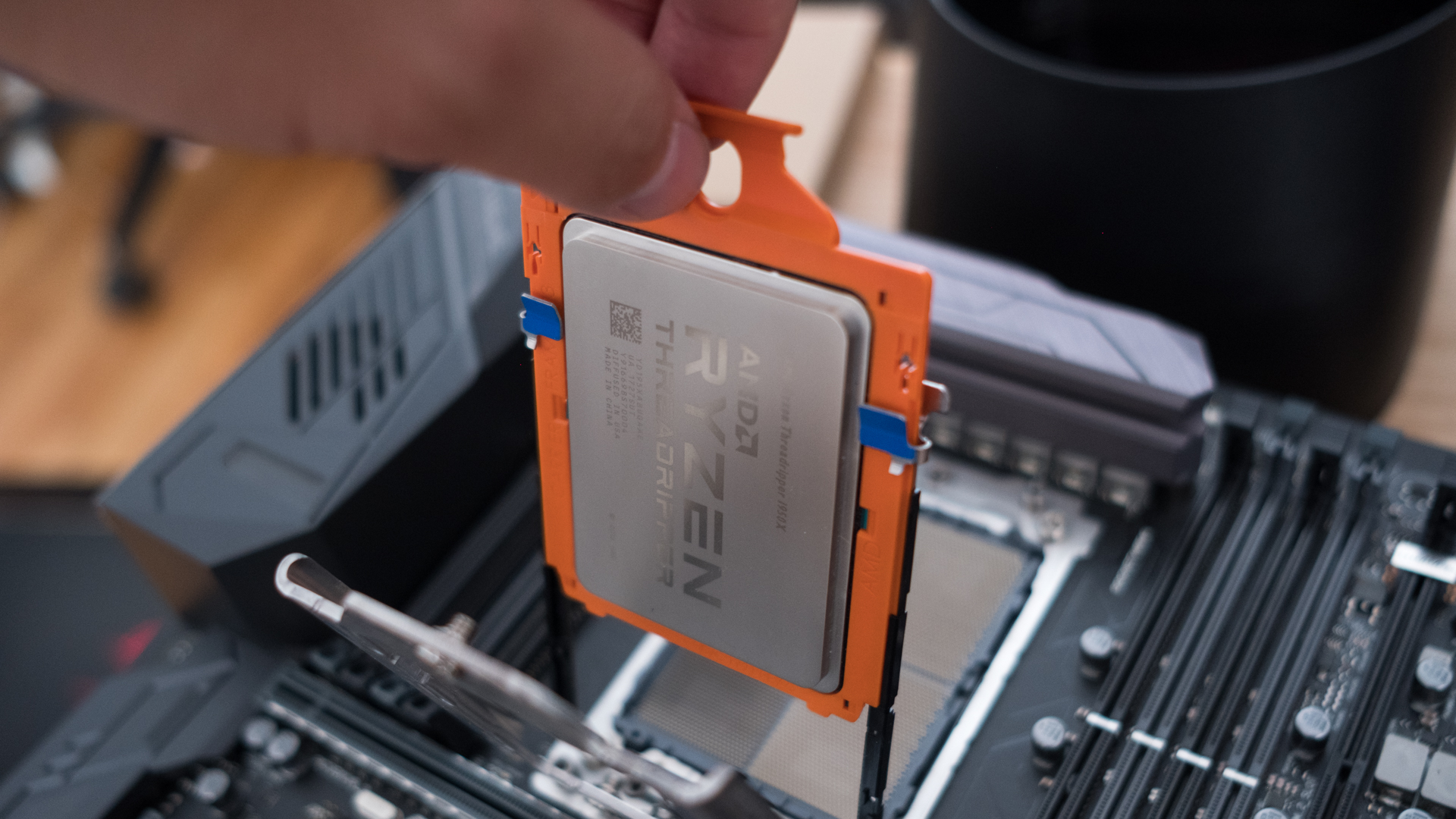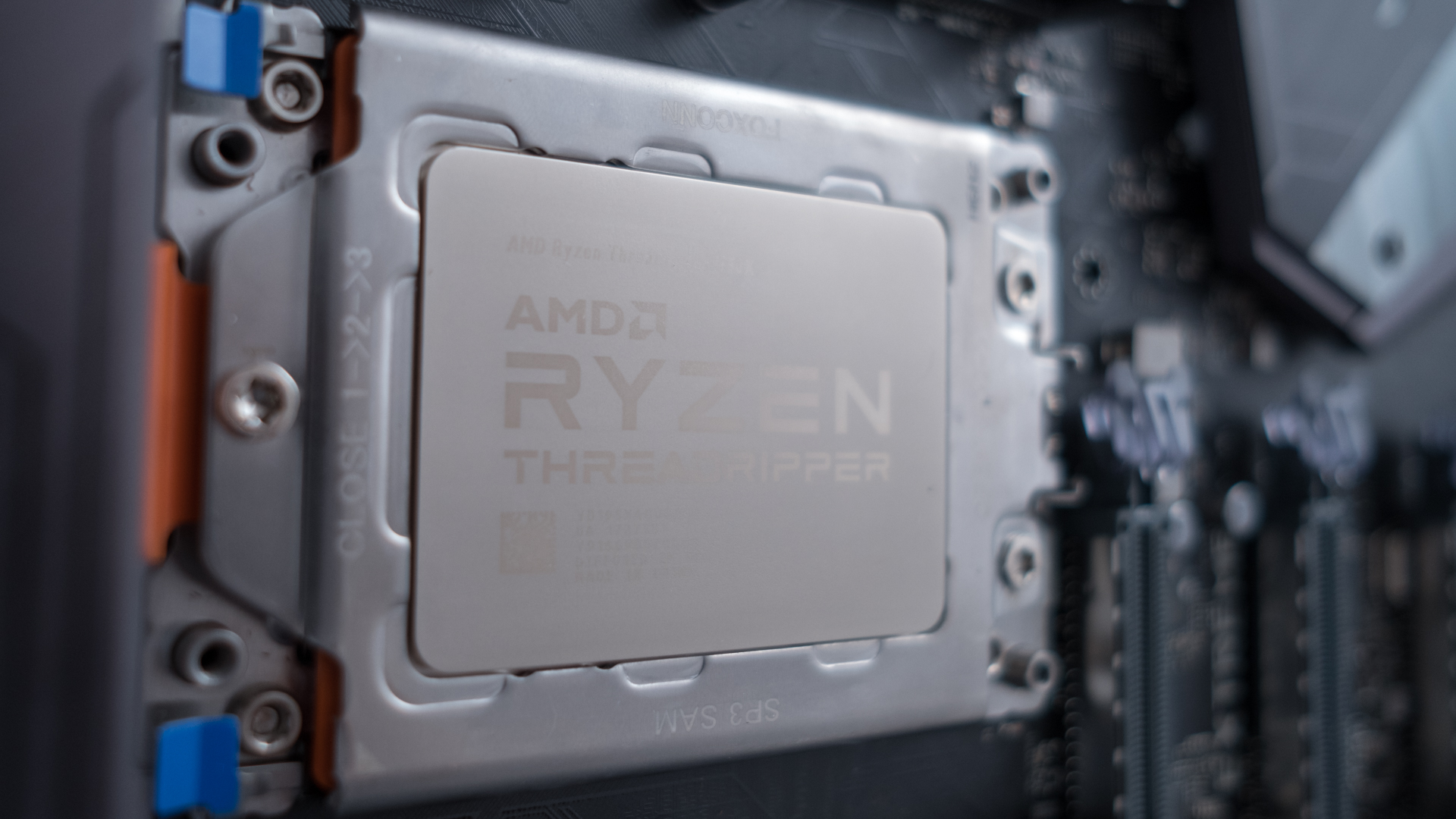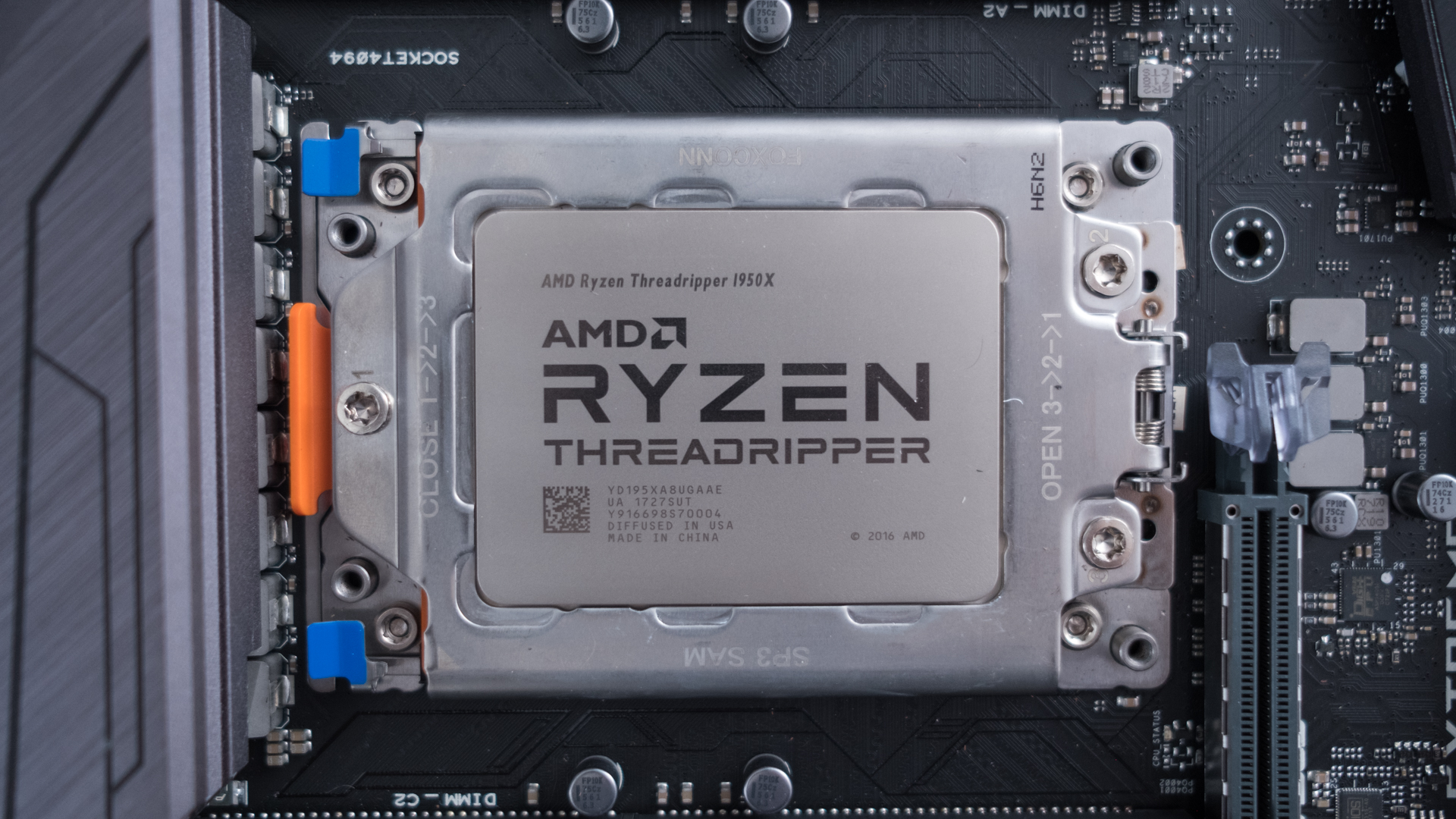TechRadar Verdict
The AMD Ryzen Threadripper 1950X isn’t the processor prince that was promised, but it brings enough power to make you consider it over Intel.
Pros
- +
Ready for the ultimate mega-tasking
- +
Easier to install than Intel
- +
Future-proof expandability
Cons
- -
More power hungry than Intel's rival
- -
Switching profiles requires a full restart
Why you can trust TechRadar
Over the past half year, AMD has redefined the processor world with high-core count and affordable Ryzen CPUs. Now, the $999 (£999, AU$1,439) Threadripper 1950X feels even more ambitious. This might just seem like a Ryzen chip on steroids, but it also introduces an architecture, as well as features, previously only seen in servers and enterprise-grade computers.
- Get all the latest AMD Threadripper news
Equipped with 16 cores and 32 threads, there aren’t many processors that can stand up to the AMD Ryzen Threadripper 1950X – including the equally-priced $999 (£899, AU$1,449) Intel Core i9-7900X.
That said, you’re looking at a pretty expensive CPU with way more power than most people need. Also, because Threadripper is so different to any consumer CPU before it, the 1950X runs into a few problems that will likely be fixed with time.

Cores: 16
Threads: 32
Base clock: 3.4GHz
Boost clock: 4.0GHz
L3 cache: 32MB
TDP: 180W
Pricing and availability
For casual gaming, we would say a $200 (about £154 AU$254) processor is good enough, and $300 (about £231, AU$381) if you’re looking for something futureproofed for at least a few years. With this mind, paying $999 for the Rzyen Threadripper 1950X might be mind boggling to most users.
This is exactly why AMD is marketing this chip to its die-hard fans, the ultimate mega-taskers and gamers who also want to play, record, stream and produce video – all at the same time.
Even if you’re not that person, AMD arguably makes a better case for its $1K processor than the Intel Core i9-7900X. On paper, the Threadripper has six more cores and 12 more threads than the Core X part, though, Intel has the upper hand with a greater range of 3.3GHz base/4.3GHz boost clock speeds and a lower 140-watt thermal design power.

Features and chipset
If you’ve never handled server-grade components before, Threadripper will be an eye opener for you. The processor is physically twice the width of most consumer market CPUs. What’s more, instead of plopping a chip onto the motherboard, Threadripper CPUs come attached to a holder you slide into place – we’ll have a how to guide on installing the processor soon.
Sign up for breaking news, reviews, opinion, top tech deals, and more.
Those with liquid-cooling solutions also might find it especially unnerving to see the corners of their processor uncovered and bare – rest easy, the processor dies are positioned in the center of the chip.
Once you get over the new physical nuances of Threadripper, there are also new software profiles to get your head wrapped around. Out of the box, the 1950X and all Threadripper parts thus far are configured to run in either a Creative or Game Mode.
Without getting too deep into technical aspects, users can for the most part expect premiere, video encoding and multi-tasking to operate more smoothly in Creative Mode.
Meanwhile, Game Mode has the CPU turn off half its cores and return to a more traditional memory access protocol, which helps it deliver slightly higher frame rates while gaming.

For the most part, you should be able to do everything you want to, including playing most games, in Creative Mode. Gaming Mode is better for playing games but, as we’ll go over in our benchmarks, there isn’t a dramatic improvement in frame rates to warrant switching every time you want to play something – especially when every profile change requires a full restart.
If you’re looking for a simple plug-in-and-play CPU that just works, this left-right brain processor isn’t for you.
That said, this processor has the legs to last you for a long time. Its X399 chipset will also allow you to grow your PC with quad-channel memory and 64 lanes of PCIe for multiple graphics cards – and still plenty of bandwidth for the fastest SSDs.
GPU: Nvidia GTX 1080 Ti (11GB GDDR5X VRAM)
RAM: 32GB G.Skill Trident Z RGB (DDR4 3,200MHz)
Motherboard: Asus ROG Zenith Extreme
Power Supply: Thermaltake Toughpower Grand 1200W
Storage: 512GB Samsung 960 Pro M.2 SSD (NVMe PCIe 3.0 x4)
Cooling: Thermaltake Floe Riing 360 TT Premium Edition
Operating system: Windows 10 Pro
Performance
[Editor's Note: the original version of this review included charts that inaccurately represented the benchmark data. This has been now corrected, but the data remains unchanged.]
In the AMD vs Intel wars, we’ve come to expect the same pattern of Ryzen chips winning out with multi-core performance while the Core i-series leads in frequency and gaming frame rates. However, the results between the Threadripper 1950X and Core i9-7900X aren’t as clear cut.
Instead, the two chips trade blows, beating each other on particular tests.
AMD set out to make the ultimate processor for content producers with the Threadripper 1950X, and we can confidently say it succeeded. The Threadripper 1950X scores significantly better in Cinebench and encodes video at a slightly faster frame rate than its Intel rival. Meanwhile, the Core i9-7900X wins out with higher Geekbench and PCMark 8 scores.
Ultimately, both these processors are putting out some astounding numbers over the traditional quad-to-octo core processors we typically test and use every day – as they should for such a high asking price.
When it comes to gaming, the Intel Core i9-7900X might look like the clear winner with higher frame rates across all our gaming benchmarks. However, as we raised the resolution on Total War: Warhammer and Rise of the Tomb Raider, Intel’s advantage evaporated quickly.
From our testing, it also seems as though you can skip Game Mode entirely, as it only adds one or two extra frames per second with most graphically-intensive games. You’ll see Game Mode have a greater effect with processor intensive games, such as Total War: Warhammer jumping from 92 fps to 112 fps.
As with Ryzen chips that predate Threadripper, we expect to see much better numbers when we play the same titles again within a few months as developers learn to optimize for even higher-core count processors.

Final verdict
The AMD Ryzen Threadripper 1950X isn’t the silicon messiah for all the hype that its announcement and launch produced, but that’s fine. AMD has produced a very competitive product to go up against Intel’s long-unopposed Extreme Edition processors.
Although the Intel Core i9-7900X performed better than the Threadripper 1950X overall, you’ll hardly be disappointed by the performance of this processor for your creative work and gaming. Games are absolutely playable, and AMD’s 16-core chip works splendidly with creative applications. Just be sure you’re certain whether you truly need to plunk down the cash for this over-powered processor.

Kevin Lee was a former computing reporter at TechRadar. Kevin is now the SEO Updates Editor at IGN based in New York. He handles all of the best of tech buying guides while also dipping his hand in the entertainment and games evergreen content. Kevin has over eight years of experience in the tech and games publications with previous bylines at Polygon, PC World, and more. Outside of work, Kevin is major movie buff of cult and bad films. He also regularly plays flight & space sim and racing games. IRL he's a fan of archery, axe throwing, and board games.







